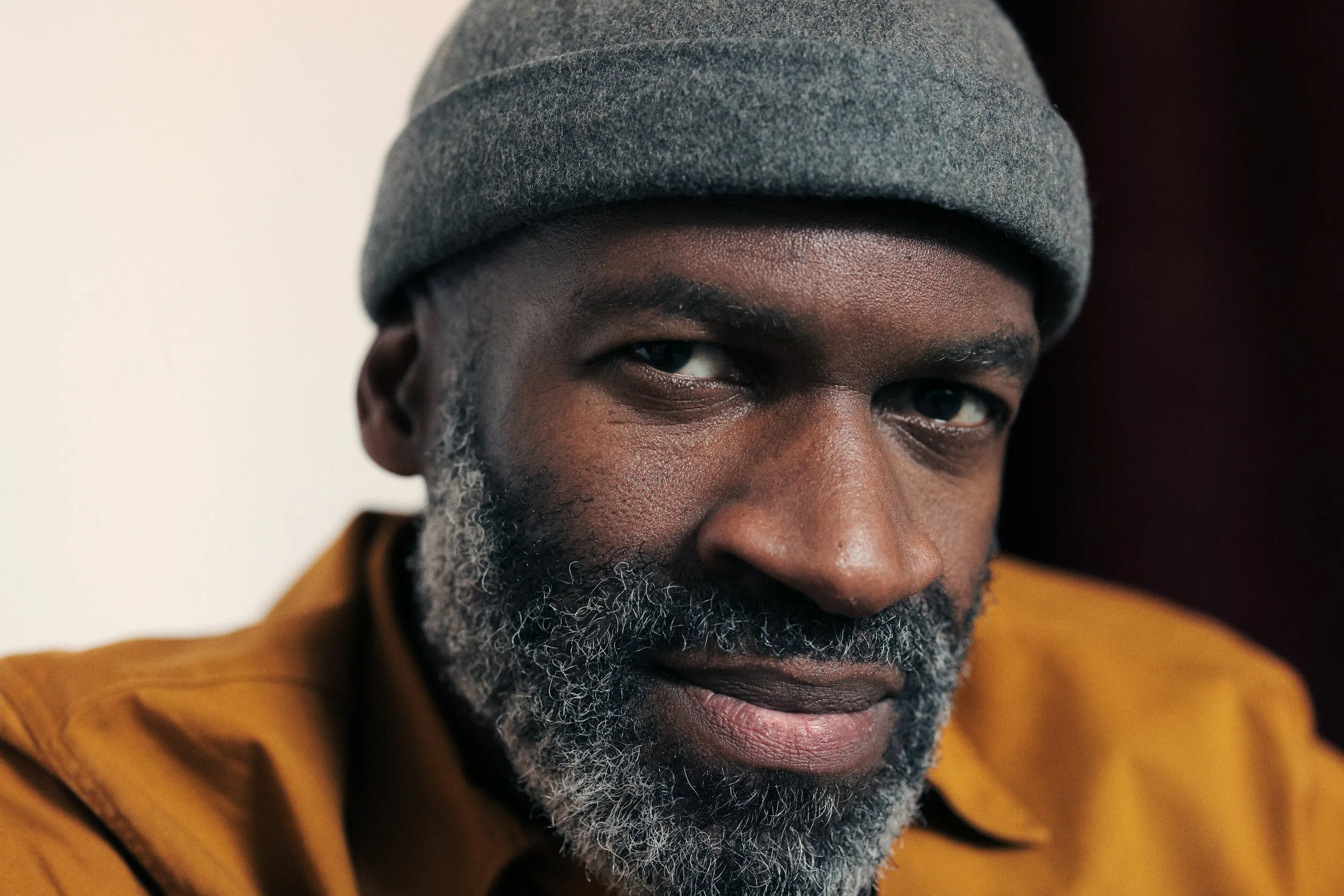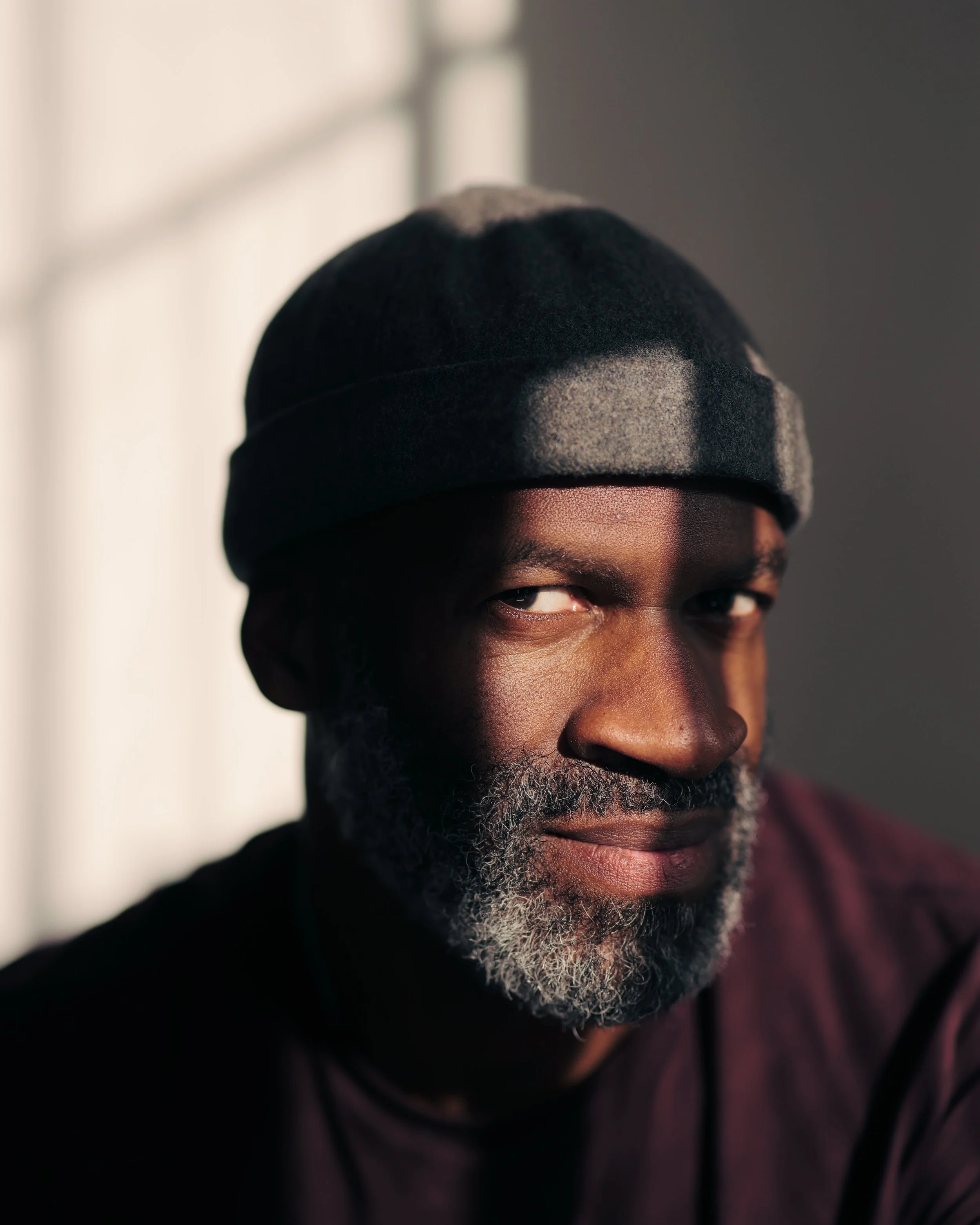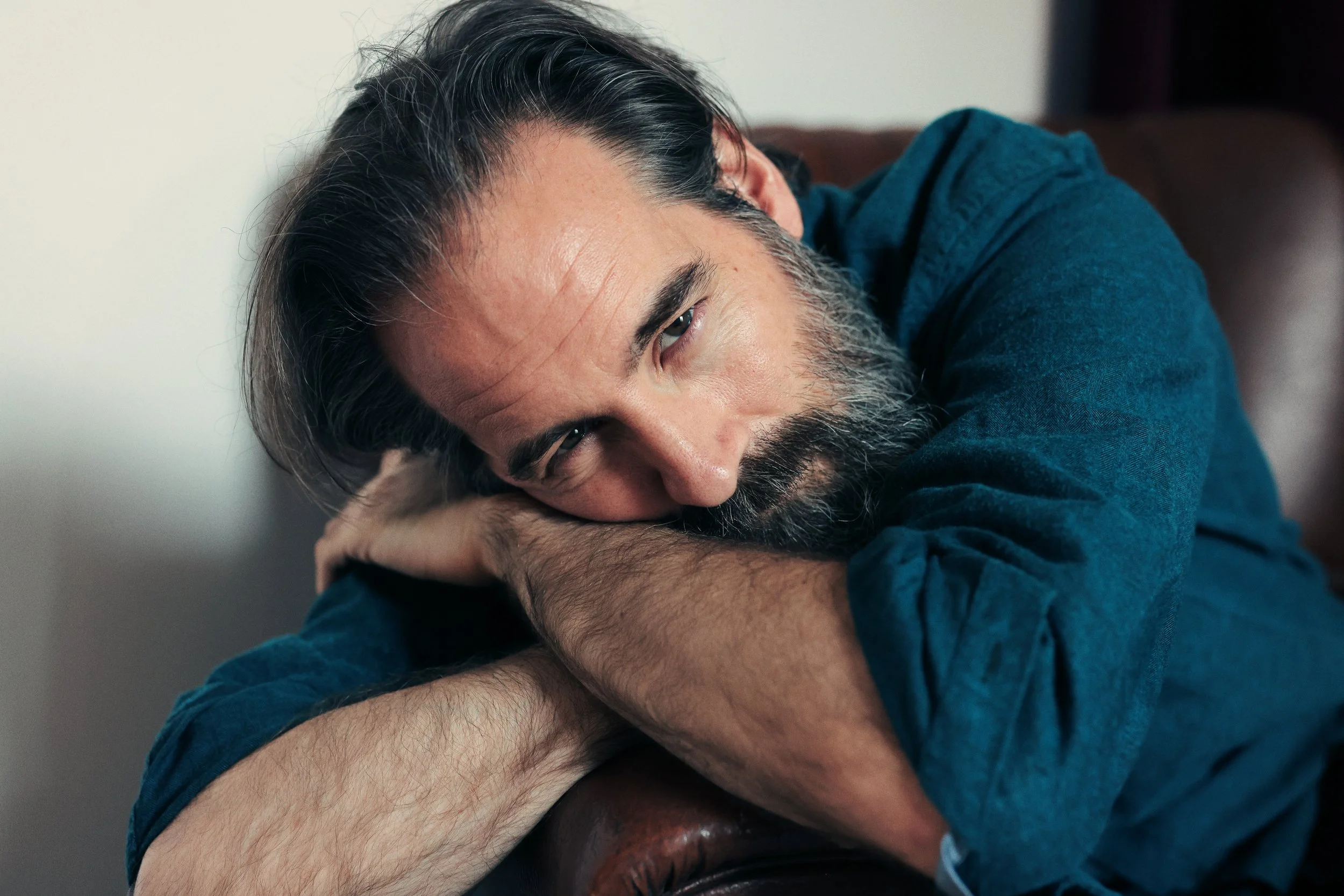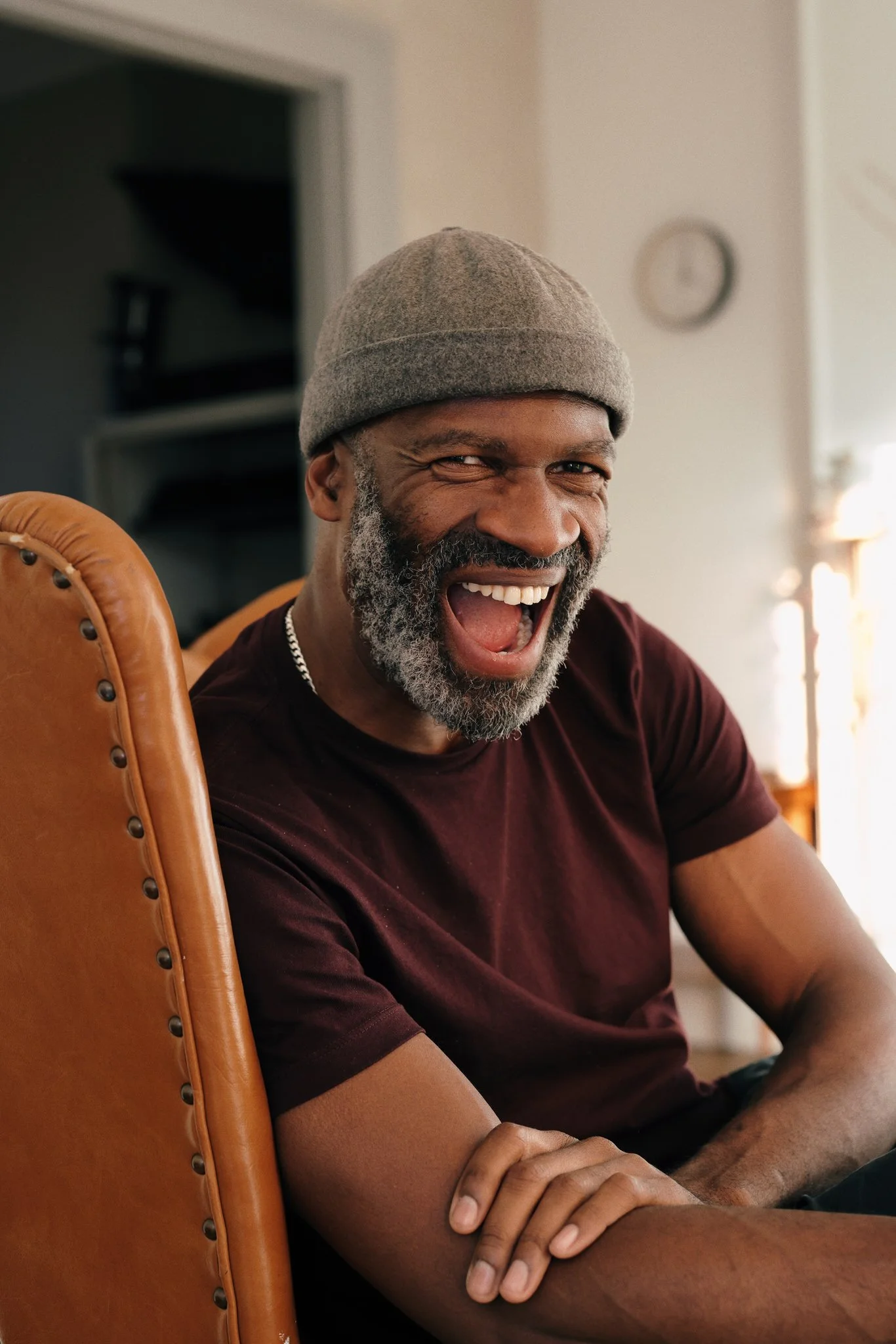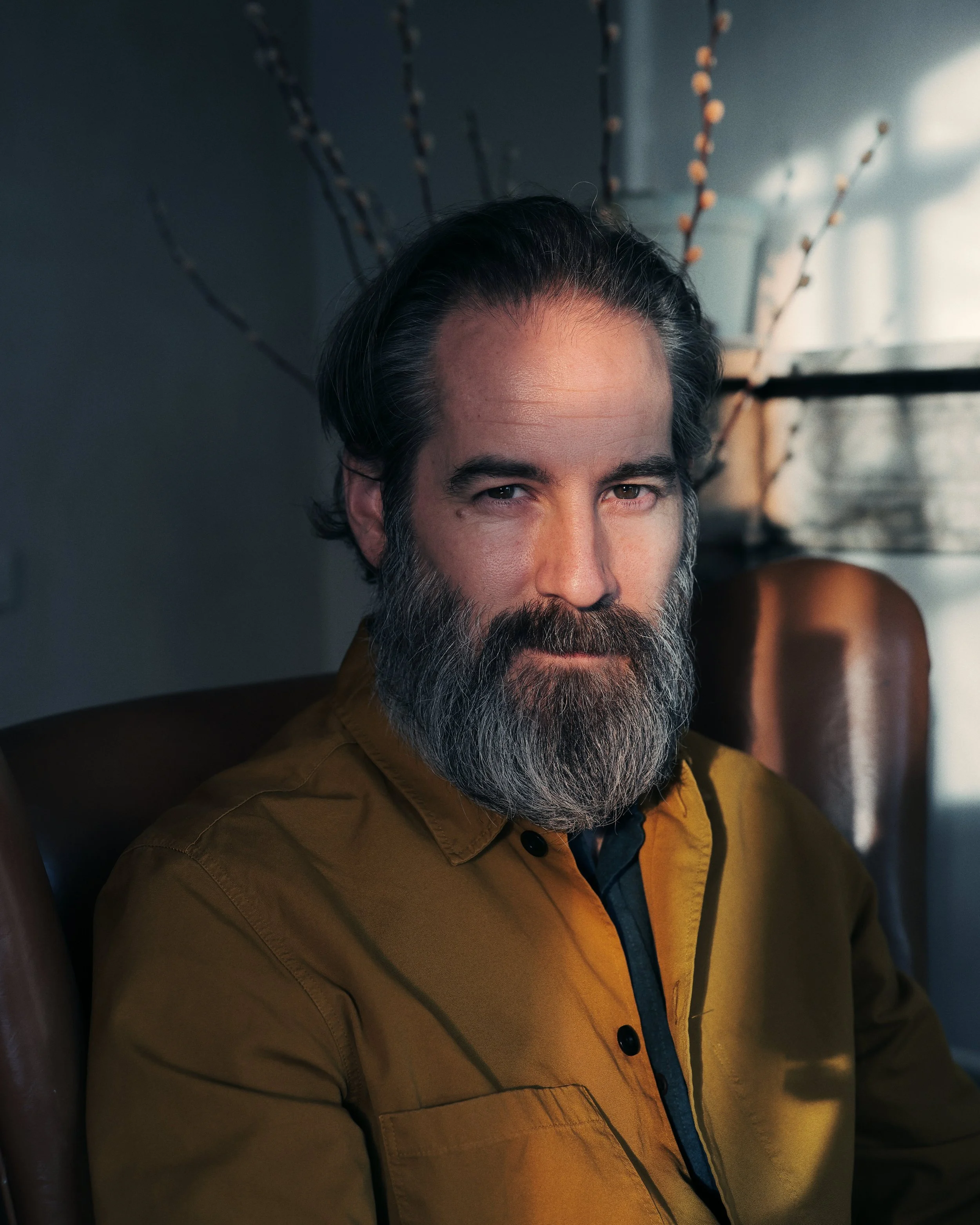IN THE STUDIO: WHAT MAKES A GREAT PORTRAIT?
A CHAT WITH PORTRAIT PHOTOGRAPHERS ivan weiss & kid circus.
At Anomalous, we opened a photography studio ideal for portraiture last year. So, I guess I run a photography studio now.
That would be fine, if I knew anything about the field.
We invited Ivan Weiss (studio portrait photographer) and Michael Coker (aka Kid Circus - portrait and fashion photographer) down to the space to help me understand more about the art of portraiture and challenge my beliefs on what makes a great portrait.
Whether you’re starting out in the industry and would like some professional advice, or you’re a seasoned “photo nerd” (as Ivan puts it) and fancied some light reading, please enjoy my four key takeaways from our conversation about what makes a great portrait.
Only blue quoted text is the opinion of Ivan Weiss (marked IW) and Michael Coker (marked MC), the rest is my own.
#1. A BETTER CAMERA DOESN’T always MEAN a better portrait
In an era of relentless growth, we often find ourselves on a treadmill pursuing the latest and greatest. As Ivan describes it, whatever kit you have today will be ‘hopelessly out of date’ in another twenty years.
It seemed obvious to me that a better camera would give you a leg up in the competition, but it turns out that your kit is only a small piece of the pie.
What's more, at the rate that technology gets churned out these days, is there any sense in trying to keep up with the treadmill, or using it as a metric to measure the quality of your work? Surely you’ll forever be chasing your tail.
IW: I like to look at things with a historical perspective.
So, the technology that we have now is way better than the technology a photographer had 40 years ago. Are the best portraits being made now objectively better than the best portraits being made 40 years ago? Flat no.
Like, the great examples from the history of photography are still great and still stand up against this.
Though the latest and most expensive camera can be used as a tool to produce a great portrait, turns out it doesn’t have to be a non-negotiable benchmark to reach in order to try.
Good portraiture can be found in the depths of an iPhone camera roll with nothing but a couple of pals, Golden Hour lighting and a bottle of wine. (Yes, I am speaking from experience).
When discussing his experience from the music industry, Michael quite rightly highlighted that results are not determined solely by the quality of your equipment; they are determined by how you apply yourself to what is available to you.
MC: I think back to my previous incarnation in the music production world, that's another industry where you can really get stuck in what kit you’ve got, what kit you haven’t got. You know: are you the haves or the have nots?
I got into this with stuff that wasn’t the best equipment, but you want to be in that realm where you’re just using what you’ve got and you’re pushing whatever limitations its got, before you start shelling more money on gear that you might not use properly or you might not use at all.
And I felt like that was the case when I was in the realm of music production, you have a whole swathe of people who, if they didn’t have ten grands of gear to make music with, they would be like ‘it's not worth trying to make music’.
Then you’ve got somebody else whose got a twenty year old drum machine sampler and they’re turning out f***ing incredible music. Or somebody that's got a Macbook laptop that came out in 2012 and they turn up and do an incredible live set at Fabric.
It seems that the bottom line when it comes to equipment and using it to capture a great portrait, is having a sound understanding and depth of knowledge on how to use what you’ve got. The quality of said equipment is really a bonus.
MC: Having a better camera is never gonna guarantee that it will make you a better photographer.
#2. A GREAT PORTRAIT GOES DEEPER THAN BEING TECHNICALLY CORRECT.
Perfectionism is a sure fire way to threaten creativity. It can channel all of your energy into only one aspect of the craft. I definitely didn’t need to sit down with anyone to learn that. This blog post alone is enough proof for me.
Of course, great portraits can be taken with all of the correct settings, lighting and angles; but can’t they also be taken completely by accident? After all, aren’t the greatness of candid shots dependent slightly more on the person than the settings?
When I asked what makes a great portrait, the photographers suggested the importance of how interesting the shot was, and how palpable the feeling of humanity.
IW: If you make it interesting - the viewer will create the story for themselves. And, you know, it's human beings - every human has got a story. So, whether it's a real one or a fictitious one for the purpose of the picture I don't think that matters.
KC: Is it interesting? Can you see the emotion? Can you see the humanity in the person? If there’s none of that there, none of the rest matters. At all.
I concluded that, though understanding the limitations and capabilities of your equipment is necessary, what it means to take a great portrait is not always the same as what it means to take a “correct” portrait. And a “correct” portrait seemed infinitely less important.
IW: People think a great portrait has a lot to do with ‘does it look good?’ You know, the appearance of the person. Or the photography audience will think: ‘Is it technically good?’ ‘Is it inventive?’ ‘Has it been done before?’ You know, all that kinda stuff… I think that those are all real dead ends. An interesting picture is an interesting picture.
KC: A lot of people concentrate on: ‘Oh that’s not sharp’ ‘Is that technically correct?’ ‘Is that the right way to light that person in that picture?’ And it's all just b****cks.
Another idea that Ivan shared was how people could get stuck in the mindset that there is a ‘right way’ to take a great portrait; that it can be recreated as a formula over and over again.
It became apparent to me that the beauty of great portraiture is that each one is original, every story to tell totally different from the last. There couldn’t be a formula for that.
IW: I think the people that are stuck in that way of thinking and the people that ask me those kinds of questions on social media, I think what they’re trying to do is find the shortcut, find the system.
So if you understand a system like ‘How does making a portrait work?’ Oh, you just have to set your camera settings to this and set your lighting like this and put it in this position, then you will make a great portrait guaranteed. That’s a very seductive idea, right?
#3. WORKING THE WAY YOU LOVE MOST MAKES A DIFFERENCE
Photography, like most art forms, has a wide spectrum of methods, styles and working conditions. For example, Ivan works almost entirely from his studio in Kings Cross, Michael enjoys a blend of location and studio shoots, whereas other photographers are total nomads.
As a creative discipline, it would appear that the spectrum will only continue to grow as photographers discover new, and repurpose old, ways of creating art.
Just like anything in life, figuring out what works for you involves experimentation. It means trying things out. Loving some. Hating others.
It’s like when I managed to get out of every single sports day from ages 11 to 16 without fail, opting to lay in the sun eating ice poles instead. It just wasn’t for me.
IW: When I first left school, I worked as a bicycle courier. Outdoors, five days a week in London in this s*** weather. Mostly freezing cold and soaking wet. And I thought, I’m never working outside again in my life. [laughs]
So all of that location photography, humping gear around, I thought nope. I’m gonna have my little space and have people come to me.
One thing became abundantly clear to me during this conversation; in the world of photography, when you find exactly what works for you, you’ll know it. To create a great portrait, a piece of the puzzle seemed to be aligning how you work with the way you want to work.
AH: Ivan, do you ever branch out and do anything other than portraiture?
IW: No, it's so sort of complete and perfect for me and my mindset. It's funny, I was looking this morning, I’ve got a hidden webpage where I put the best of the stuff that I’m shooting, like a scrapbook lets say, and I’ve got two shots in there. One is architectural, and one is of a flower.
And I looked at them, and I shot them like portraits. [laughs]
Because that’s me. And it's not so much that I don’t know how to do anything else, it's just like, why would I?
And even then, the way that you enjoy working may also evolve over time. I suppose a lot of it comes down to listening to your inner compass. You’ll always know when you’re ready for a change.
Despite this fact, I was still surprised to hear that both photographers hadn’t always been in the portraiture game.
KC: I just tried everything. I did architecture, buildings, sunsets, landscapes, roof-topping - a very short lived bit of photography.
I was inspired by portrait work that I was seeing. But even with that, I thought it was just gonna be a flash in the pan type thing that I would try for five minutes and then go back to street photography which had become my absolute love.
So, I genuinely thought I’d do it one or two times then go back on the streets of Soho. Then, those ones I did initially and started getting results, it was just like a gateway drug. [laughs]
Like, boom, I love this. I want to do more. Then it was going out, finding people on Instagram and shooting anything up to four times a week for about six months. The torch paper just got lit.
#4. tapping into YOUR lived experience to capture someone else’s.
Something I’ve always believed as a creative myself is that the most undeniably unique quality about every individual is their own story; and this can be used to harness greatness in art. This interview only proved this point tenfold to me.
After all, what is considered a great portrait is ultimately a subjective idea, but an interesting depiction of someone’s inner story is likely to be universally enjoyed.
IW: There are types of pictures that I might find more interesting than you do, but there’s definitely pictures that have longevity and are interesting. Maybe not everyone likes the Mona Lisa, but I think we can all agree that it's interesting.
When a photographer can align with their true self and lean into their lived experience to capture that of another, it seems undeniable that more authentic and great art will be produced as a result. That is what makes art so diverse and complete. We all carry a piece of the puzzle to create the picture of the wider world.
KC: It's driven by your imagination. I feel like your perspective and your lived experience subliminally has an effect on how you capture the world. How you see the world, how you capture it.
According to Ivan and Michael, if the main criteria of a great portrait is to be interesting, what do we find more interesting than something different to us? A new story. A fresh pair of eyes. A unique way to perceive the world.
IW: I did a project, I think I shot it a couple of years ago, but it was exhibited last year in Milan called Atlas of Humanity.
The idea of the project was to capture a portrait that in some way represents every ethnicity that exists on the planet. And you wander round that exhibition and yeah, it's just like a series of 70-100 portraits where each one has that thing:
“Oh right, this is a person from the other side of the world that's in a completely different culture, different language, I know and understand very little about their life, but they’re looking at me, and I’m looking at them.”
And you get that sense of what connects us, what is the same about us, and at the same time what is different and interesting and what we can learn about. And yeah, if they’re captured as interesting portraits, I would happily spend a couple of hours looking at a picture rather than watching a film.
IN CONCLUSION
Taking a small peek into the minds of these epic photographers was my first step to understanding this immense craft.
I learned that to shoot a great portrait, you don’t need the latest camera, perfect lighting or a runway model. You need to channel your own view of the world, to emphasise your subject’s experience of the world, in an interesting way.
You could even use an iPhone 6 and still shoot something great. Who knew?


